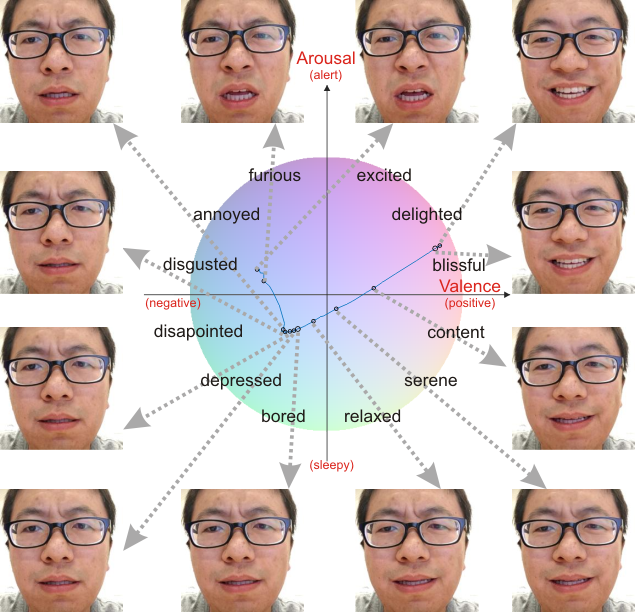Fine-Grained Facial Expression Analysis Using Dimensional Emotion Model
Shu Kong*, Feng Zhou*, Charless Fowlkes, Tao Chen, Baiying Lei
Last update: May 2, 2018.
Automated facial expression analysis has a variety of applications in human-computer interaction. Traditional methods mainly analyze prototypical facial expressions of no more than eight discrete emotions as a classification task. However, in practice, spontaneous facial expressions in naturalistic environment can represent not only a wide range of emotions, but also different intensities within an emotion family. In such situation, these methods are not reliable or adequate. In this paper, we propose to train deep convolutional neural networks (CNNs) to analyze facial expressions explainable in a dimensional emotion model. The proposed method accommodates not only a set of basic emotion expressions, but also a full range of other emotions and subtle emotion intensities that we both feel in ourselves and perceive in others in our daily life. Specifically, we first mapped facial expressions into dimensional measures so that we transformed facial expression analysis from a classification problem to a regression one. We then tested our CNN-based methods for facial expression regression and these methods demonstrated promising performance. Moreover, we improved our method by a bilinear pooling which encodes second-order statistics of features. We showed such bilinear-CNN models significantly outperformed their respective baselines.keywords: Dimensional Emotion Model, Fine-Grained Analysis, Facial Expression, High-Order Correlation, Psychology, Affective-Cognitive Computing, Physiological Computing.
-
F. Zhou*, S. Kong*, C. Fowlkes, Tao Chen, Baiying Lei, "Fine-Grained Facial Expression Analysis Using Dimensional Emotion Model ", arxiv 1805.01024, 2018.
[paper] [videoDemo1] [videoDemo2] [project page] [demo] [github] [models] [data] [result]

